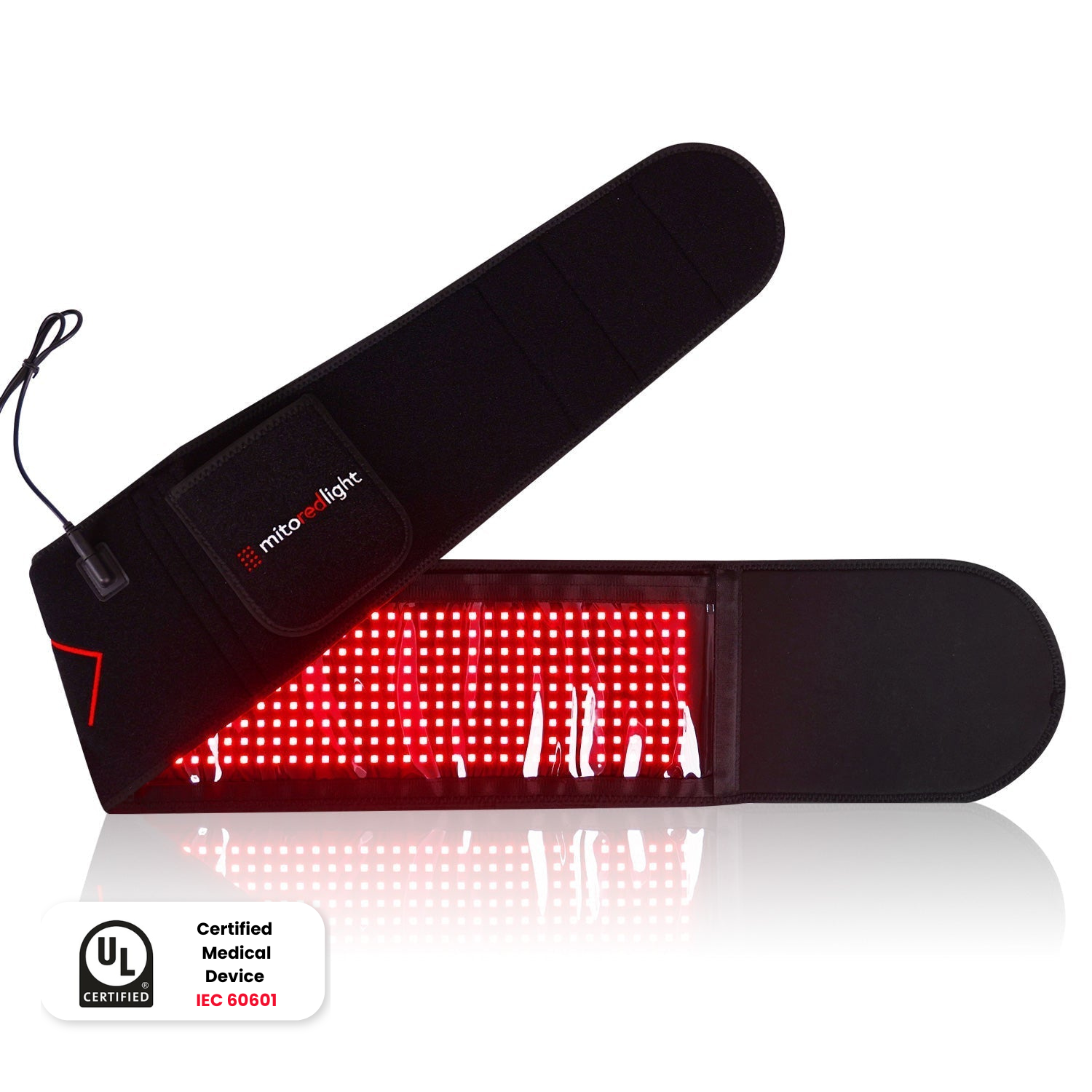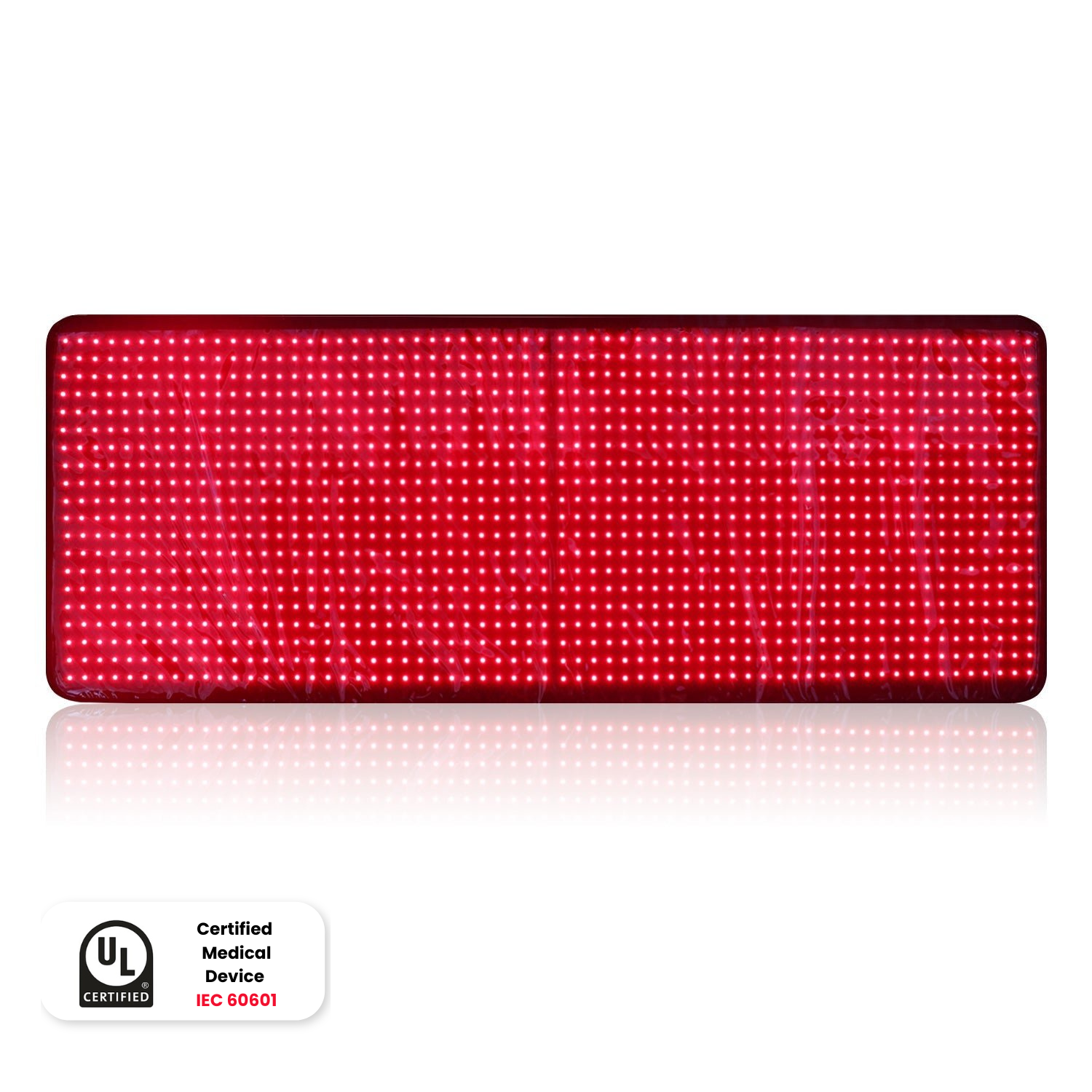DISCLAIMER: Mito Red Light devices are Class II wellness devices aimed at affecting the body through topical heating and supporting cellular function. The information provided in this article and on this site is for educational purposes only and is not intended to imply effectiveness of Mito Red Light devices for any specific application. The information provided in this article and on this site is not intended to diagnose, treat, cure, or prevent any disease, is not a substitute for consultation with a licensed medical provider and should not be construed as medical advice. Click here to read our article on potential contraindications of red light therapy..
Table of Contents
- 1666: The Field of Optics is Born
- 1879: Electric Light Becomes Available
- 1893: Light Used in Medicine For the First Time
- 1917: Lasers Developed
- 1935: The Effects of Sunlight on Vitamin D Understood
- 1956: Effects of Phototherapy Discovered
- 1962: The LED Is Invented
- 1993: LEDs Become Practical
- 1993: NASA Discovers Red Light’s Wound Healing Properties
- 2001: NASA Research Shows Red Light Therapy Enhances Healing
- 2008: Red Light’s Effects Begin to Be Understood
- 2012: Red Light Therapy Found to Improve Sleep
- 2013: Red Light Therapy Found to Improve Cognitive Function
- 2016: Red Light Therapy Found to Improve Inflammation
- 2021: The Future of Red Light Therapy
Red light therapy uses specific wavelengths of light to stimulate a microscopic cellular component that lives in almost every human cell called the mitochondria. Red light therapy is used for a variety of reasons, including managing chronic pain, improving sleep quality, healing wounds, improving skin quality, and treating arthritis. Those looking into red light therapy for the first time often wonder how the idea of red light therapy was discovered and what the history of red light therapy is.
1666: The Field of Optics is Born
The history of red light therapy begins in the year 1666, often referred to in scientific history as an annus mirabilis (Latin for “miraculous year”) in science. In this “miraculous year”, a 23 year old scientist named Isaac Newton made numerous discoveries in many fields of science.
One of the many important discoveries that Newton worked on in this important year in scientific history was the beginning work in the field of optics, the branch of physics studying the behavior and properties of light. Specifically, Newton discovered that sunlight could be split into different wavelengths and that light is made out of many different wavelengths of light that have slightly differing behaviors.
1879: Electric Light Becomes Available
The next great advance towards red light therapy occurred over two centuries after Newton’s annus mirabilis with the invention of the first practical electric lightbulb by Thomas Edison. Prior to the invention of the electric lightbulb, people relied on natural sunlight or on light produced by flame. The invention of the electric lightbulb allowed humans to access light that could be more easily controlled and manipulated, paving the path for advances in light-related technology that were previously impossible
1893: Light Used in Medicine For the First Time
The first time that light was actually used as a form of medical therapy in modern times dates back to the year 1893 when Nobel Laureate and Danish physician Dr. Niels Ryberg Finsen used red light to treat smallpox, then two years later used light to treat lupus.
Finsen’s interest in light therapy came about when he developed a severe illness called Pick’s disease and found that sunbathing helped his symptoms. Finsen was awarded the Nobel Prize in Physiology or Medicine in 1903, when the Nobel prize committee recognized “his contribution to the treatment of diseases, especially lupus vulgaris, with concentrated light radiation, whereby he has opened a new avenue for medical science”
1917: Lasers Developed
The next event facilitating the use of light in medicine was the development of the modern laser by Albert Einstein in 1917. The laser uses concentrated, high energy light that has been applied in many different ways in modern medicine.

1935: The Effects of Sunlight on Vitamin D Understood
While the discovery of vitamin D occurred in pieces with several smaller discoveries, by the year 1935, it was understood that vitamin D was essential for good health, and its production was stimulated by sunlight. Since the early days of vitamin D, scientists now know that a specific wavelength of ultraviolet light is responsible for stimulating vitamin D. This discovery was a significant step in showing that the exposure of the skin to light alone was sufficient to cause medical changes in the body of a healthy individual.
1956: Effects of Phototherapy Discovered
The discovery of phototherapy used to treat high bilirubin levels in infants occurred at Rochford General Hospital in Essex. One of the hospital’s nurses found that an infant with jaundice (a common yellowing of the skin in newborns caused by high bilirubin levels) had experienced a decrease in jaundice in areas exposed to the sun.
A few weeks later, a blood sample that was known to come from a patient with high bilirubin showed excessively lower levels of bilirubin than was expected. Dr. RH Dobbs, the attending physician on the ward, looked into the cause of this unexpected value and found out that the specimen had been left in direct sunlight for several hours before being tested.
These two events coupled together led Dobbs to hypothesize that sunlight could be used to treat high bilirubin levels in infants and avoid the potential brain damage that these high bilirubin levels could cause. Further research led Dobbs to discover that even exposure to a certain wavelength of artificial light was sufficient to lower bilirubin levels. Phototherapy is now routinely used in the modern treatment of high bilirubin levels in infants.
1962: The LED Is Invented

While technically, the first light-emitting diode (LED) was invented in 1961 by Robert Biard and Gary Pittman, this LED was microscopic and not practically useful. It was not until 1962 that Nick Holonyak, Jr., the “Father of the Light-Emitting Diode”, invented the first visible LED that could be practically used,
LEDs offered an alternative to traditional electric light using the incandescent lightbulb. Importantly, LEDs provide the ability to produce a single wavelength of light instead of the many wavelengths of light that the lightbulb produces. LEDs initially only emitted red light but were later developed to emit light at many different wavelengths. Several sources note that LED therapy was used as a method of treating pain and arthritis in Eastern Europe soon after being invented however, medical research into this area did not begin until later.
1993: LEDs Become Practical
While LEDs were invented decades earlier, it was not until the early 1990s that several advances in LEDs made in quick succession made LEDs a more affordable and more widely used technology. One of the major breakthroughs in this area of LED research was discovered by the Japanese scientist Shuji Nakamura.
By creating LEDs that were more cost-effective and more practical, the ability to produce and use LEDs on a wide scale enabled them to be used not only for medical purposes but even allowed them to compete with the traditional lightbulb.

1993: NASA Discovers Red Light’s Wound Healing Properties

While 1993 was a central year in making LED light more practical, it also played a significant role in the birth of red light therapy. This discovery occurred during research conducted by the National Aeronautics and Space Administration (NASA) on plant growth. NASA used red wavelengths of light to attempt to stimulate the growth of plants, finding that it did indeed increase plant growth.
While NASA’s experiment was a success, one interesting byproduct of the experiment was the researchers, who were themselves frequently exposed to intense red light, noticed rapid and unexpected healing of their skin lesions.
2001: NASA Research Shows Red Light Therapy Enhances Healing
In 2001, NASA-sponsored researchers published an important study, building both on the earlier incidental findings during the experiment using red light on plants and on research covering US Navy SEALs' use of red light therapy to enhance wound healing. The NASA-sponsored research not only showed that red light therapy was effective in increasing the speed of wound healing but also explained that US Navy SEALs had been found to experience wound healing that was 40% faster than normal.
2008: Red Light’s Effects Begin to Be Understood
An important study published in the scientific journal Photomedicine and Laser Surgery explained how red light therapy affects the body. Researchers discussed that red light stimulates the mitochondria in the cells. These small cellular components are the key part of the cell for controlling metabolism and energy in the cell and play an important role in the immune system and the body’s production of inflammation. Researchers also discussed how red light penetrates more deeply into the body than shorter wavelengths of light. This study played an important role in explaining many benefits that red light therapy has been thought to create.
2012: Red Light Therapy Found to Improve Sleep
Another important study, published in 2012, indicated for the first time that red light therapy could play a role in promoting improved sleep quality. This research studied basketball players in China and found that the quality of sleep was better for players who used red light therapy. Several more studies have since been performed to validate and build on these findings.
2013: Red Light Therapy Found to Improve Cognitive Function
Building on the effects of red light to promote wound healing and improved sleep, another more recent study found that red light therapy produced empirically verifiable increases in cognitive function when administered over the area of the brain. This research is new enough that ongoing research is still being performed to better understand the effects of red light on enhancing cognition.
2016: Red Light Therapy Found to Improve Inflammation
While red light therapy was already known to affect the mitochondria, which influence inflammation in the body, studies about the effects of red light therapy on inflammation really began to emerge in 2016. The idea that red light therapy helps to reduce inflammation not only makes sense, given the concept that it affects mitochondria but also helps to explain why many people find relief from inflammatory types of pain, such as arthritis, using red light therapy.
2021: The Future of Red Light Therapy
As of 2021, thousands of studies have examined red light therapy, including its potential applications, its safety, and how it works. Red light therapy is relatively new in the scope of medical history, and continuing research is essential to understand the many benefits of red light therapy and to uncover new ways that it can be applied.
One of the greatest advances in red light therapy in recent years has been the increasing ease of accessing it. While once only available in exclusive spas or specific research or medical settings, red light therapy is now available at home.
Mito Red Light provides a variety of red light therapy products designed to provide specific wavelengths of light that are thought to help stimulate mitochondria and bring about the various positive effects of red light therapy. We welcome you to review our selection of high-quality red light therapy products or to contact one of our expert representatives by phone at +1 866-861-6486 or email at info@mitoredlight.com.
Related Articles:
- What Is Red and Near Infrared (NIR) Light Therapy?
- Red Light Therapy Buyer’s Guide
- Everything You Need to Know About Red Light Therapy and SKIN
- Everything You Need to Know About Red Light Therapy and INFLAMMATION































